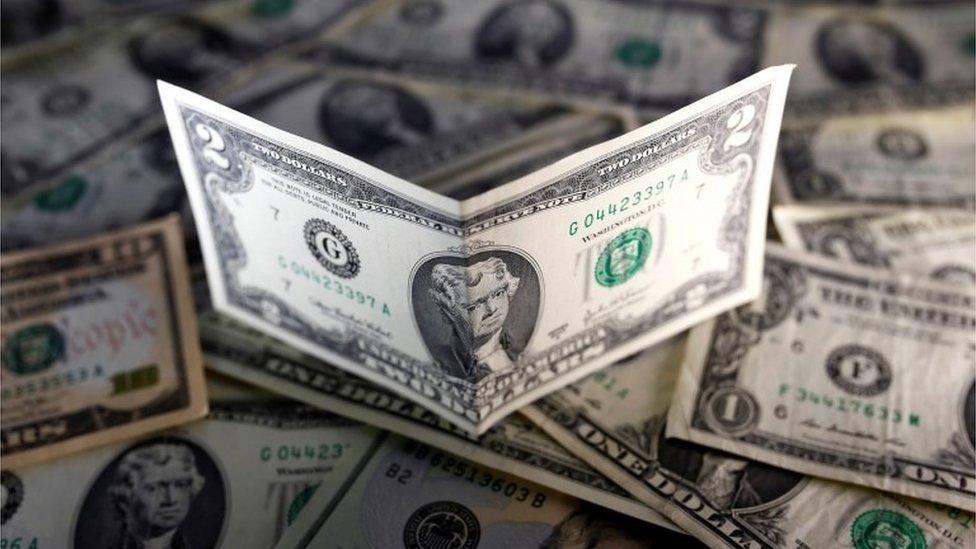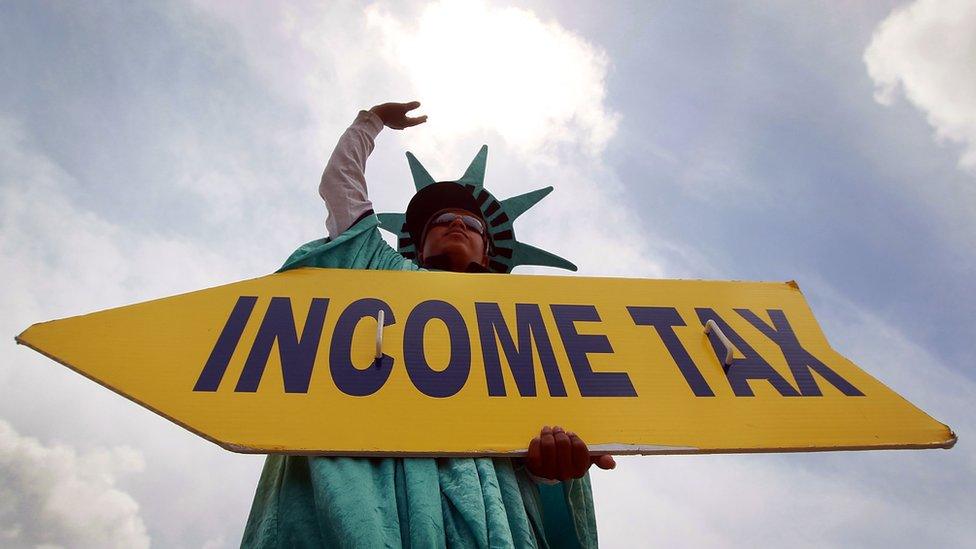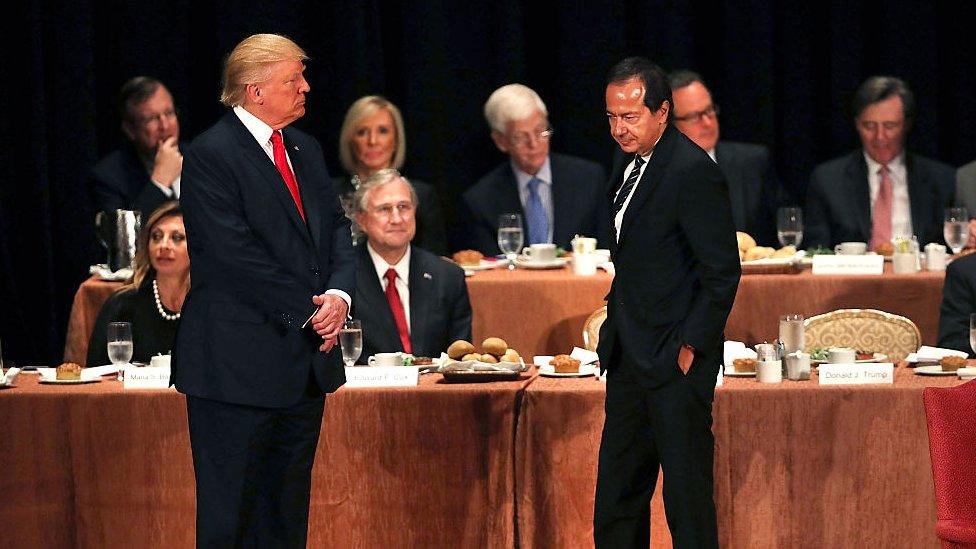Trump: A New Economic Policy for the US?
- Published

The new US President-elect Donald Trump could be signalling a major shift in economic policy.
He wants tax cuts and increased spending on infrastructure. In other words more stimulus to the economy from the government budget.
Could that mean less for the Federal Reserve to do in supporting the recovery?
That in turn could mean a more rapid return to normal interest rates.
The aftermath of the financial crisis was an important part of the background to Mr Trump's election success.
The subsequent recovery has not been particularly strong. Many Americans, especially in former industrial areas, have felt that it has passed them by.
Most of the work in terms of economic policy to support that recovery has been done by the US Federal Reserve, the country's central bank.
Economic stimulus
The Fed has maintained a policy of ultra-low interest rates, keeping a key rate for lending between banks rates practically zero until a year ago. That tends to keep rates low across the economy. Even now that interest rate which the Fed targets has been raised only once since the crisis and is just a little above zero.
The Fed also ran a programme of "quantitative easing", buying financial assets with newly-created money. That may have helped add to the downward pressure on interest rates paid by businesses and households.

But what about support from the government budget, or fiscal policy? Tax cuts and spending can be used to provide economic stimulus. It has often been done in the past in the US and many other countries.
President Obama did do that in his first term, with the American Recovery and Reinvestment Act in 2009, a programme worth $800bn.
Trump victory – markets spy an upside
Who will be on Trump's economic team?
There is a great deal of dispute about how much benefit there was from it. Some say it simply increased government debt. But others say it helped prevent another depression.
Certainly, some economists in the Obama administration would have liked to do more but felt that they would not be able to get the support of Congress.
It's also the case that, more recently, Fed officials are thought to have believed that more stimulus from fiscal policy (taxes and government spending) would have been useful.
The Fed Chair Janet Yellen didn't say that explicitly when she gave testimony to a Senate committee in June, but there was certainly a hint of that view.
The fact that there has not been as much stimulus from the government budget as Ms Yellen would probably like, is one reason why she and her Federal Reserve colleagues have kept rates so low.
But perhaps Donald Trump's election signals a new direction. Infrastructure spending is something to which he is committed and so are tax cuts.
Tax cut enthusiasm
That means more borrowing by government - unless he really does manage to double the rate of economic growth, as he said he would, presumably on the strength of his plans to reduce business regulation.
He will be working with a Republican majority in both houses of Congress.
There is likely to be real enthusiasm for cutting taxes. But allowing borrowing to rise will be harder for some Republicans in Congress to swallow.

Fed Chairwoman Janet Yellen was seen by financial markets as more likely to favour holding interest rates if Trump won.
The Speaker of the House of Representatives, Paul Ryan, is seen by many as a "deficit hawk", someone who wants to bring government borrowing down sharply. He has critics who say that's not true - but that is how he is seen by many.
Still, on the face of it, Mr Trump's plans so far suggest a stimulus to the US economy from the Federal government budget.
That means the Federal Reserve is likely to feel less need to continue providing its own stimulus in the form of its exceptionally low interest rates.
Confounding expectations
In addition, this stimulus could give inflation a boost, and the Fed will want to ensure that any acceleration in price rises is not too sharp. That's another factor that would tend to make the Fed more inclined to raise interest rates.
The next opportunity for the Fed to take a step, on what is likely to be a long road towards more normal interest rates, is a policy meeting next month. In the aftermath of the election the view in the markets is that the likelihood of a rate rise has increased since before the election.
Indeed, before the vote, when markets thought Mr Trump would probably lose, the view was that if he did confound expectations and win, the Fed would be more likely to hold back due to financial market volatility.
In the event, that didn't materialise and so now the Fed is seen as likely to be back on its original course for a rate increase at the next meeting. And because of Mr Trump's budget plans, the odds of that have increased.
In short it might be that Mr Trump has begun the process of taking away from the Fed the job of stimulating the recovery.
It's unlikely that Ms Yellen would mind all that much. Apart from anything else, higher Fed rates would give the central bank more ammunition - more scope to cut rates later - when the US economy has another downturn, as it surely will sooner or later.
- Published9 November 2016
- Published9 November 2016

- Published9 November 2016
